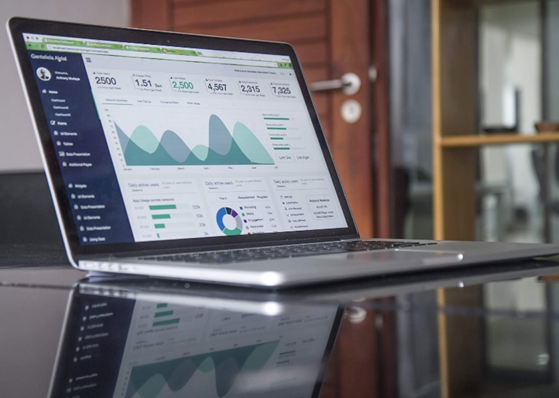
How to Design the Perfect Ecommerce Landing Page
Contents
What turns a visitor to your site into a buyer? For any ecommerce business, getting to the bottom of this question is essential for driving sales. Attracting customers to your site is only part of the solution. Once they arrive, you need them to stick around long enough to take that crucial next step.
In this article, we’ll look at the importance of landing pages in encouraging visitors to your site to progress through the customer journey. We’ll also give some guidance on how you can create landing pages that work. So, let’s dive in.
Why Landing Pages Are Essential
In the modern ecommerce environment, you’ll fall behind the competition if you don’t use landing pages. They’re a vital part of today’s online strategy.
Increasing conversion rates
Landing pages are crucial for increasing conversion rates. It doesn’t matter how good a job you’re doing of attracting potential customers to your site if they don’t make a purchase when they get there. No doubt, you put a lot of time and effort into your online ad campaigns. But those alone form only one part of the customer journey.
If, when people land on your site, they’re faced with a cluttered page that doesn’t tell them what they want to know, they’ll leave. Having a tailored landing page that makes it easy for newcomers to click through and achieve their desired objective is key.
Higher ROI for your paid ads
When you integrate specific landing pages into your marketing campaigns, those campaigns will be more successful. It means better value for money. Designing effective landing pages is not as complicated as you might think. And they can make all the difference between achieving an excellent ROI and a mediocre one.
Enabling accurate testing
One benefit that might not be immediately obvious is that landing pages can be used to try out new ideas. Think of how app developers often use functional test protocols to ensure their products meet customer needs. You can use landing pages to do something similar.
Landing pages offer the opportunity to A/B test elements such as which calls to action are most effective and which special offers get the most engagement.

Free to use image sourced from Unsplash
Allows targeting specific customer segments
Create each landing page to be relevant to the customers you’re targeting with a specific product. That way, you’ll see increased engagement. Consider aspects like the look and feel of your page, the value propositions you’re offering, and whether the page should be optimized for mobile devices.
Creating the Perfect Landing Page
Effective landing pages feature several standard elements. But before you do anything else, it’s vital to carry out a little research.
CRO research
Just as good branding might begin with a brand proposal template but wouldn’t end there, so too does designing a good landing page involve multiple steps. The first is researching to find out as much as you can about your customers.
A good place to start is to use an analytics tool to establish where your traffic is coming from and which devices your customers are using. This can help you decide whether you need to focus more on optimizing your pages for mobile or desktop, for example. And if you can find out which platforms your visitors have clicked through from, you can make their experience contextually relevant. All of which will reduce bounce.
So what should you include on your landing page to keep your visitors’ attention?
Elements to include in your landing page
Your visitors know instinctively what they expect from a landing page, even if they couldn’t necessarily put it into words. You have to ensure your website credibility is high and your landing pages pleasing. They should include:
Excellent quality images
Excellent quality images are a must. Your customers can’t handle the merchandise as they could in a physical store. All they have to go on is the images you provide, so make sure they are excellent. Similarly, businesses should also design logos that visually communicate their brand identity. Include several professionally produced photos of the product in a mini photo gallery.

Free to use image sourced from Unsplash
It’s not just product images, though – you can also use images of any awards or endorsements you have received. You can even use images of delighted customers using your product as part of your social proof section (see below).
Just remember that all images used need to be optimized for the devices your customers are using to view them. It shouldn’t be necessary to scroll or zoom in to see an entire image on a mobile device, for example.
Social proof and reviews
There’s nothing like a good old-fashioned testimonial to entice people to buy. It all helps when you’re trying to reduce cart abandonment rates and increase engagement. Social proof encompasses all the positive feedback you get on your social media channels. It’s the everyday earned currency of modern marketing.
If you can, it’s a terrific idea to feature videos of satisfied customers using your product. Video brings the experience alive more effectively than static images do.
Excellent reviews are the gold standard, of course. If you’re launching a new product, then you can link to older reviews for other products. Product-specific landing pages aiming to convert via sales of that one product should ideally feature glowing reviews for that product, of course.
Sales copy that focuses on product benefits
While direct sales teams can use tools like PandaDoc proposal management Salesforce software to reach their targets, selling via landing pages requires a different approach.
It’s crucial to list the benefits of the product for your customers. What problems do they have that your product will solve? Is your product aspirational? Excellent value for money? Explain exactly why the visitor to your site should buy your product. Make it relevant to your target audience.

Free to use image sourced from Unsplash
The buy box
This is the principal focus of a product-led landing page. It should have images of the product alongside the product details and an “add to cart” button.
Surprisingly, not all companies optimize their buy boxes well. Too often, they’ll miss the opportunity to list features like review stars or social proof. It is possible to do this without making the visual impact too cluttered. Elegant design is key, of course; try to include these without crowding the box:
- Review stars
- Satisfied customer comment
- Unique sales proposition
- Superb images
Finally, it’s crucial to make sure you optimize for speed and device compatibility. There are plenty of tech tools for ecommerce that can help with this. Compress the images so they load as quickly as possible and check that the photo gallery can be viewed easily on desktop and mobile.
The Ideal Landing Page Layout
You spend a lot of time on getting each factor of your business right, from implementing customer research to researching additional software. You’re used to nailing the details, in other words. And when it comes to the layout of your landing pages, the detail matters.
How much should be above the fold?
The fold is that area at the top of a web page you can see without scrolling down. It varies depending on the size and shape of the screen the page is being viewed on. Since many people never scroll down, the area above the fold is prime space.
While it’s important to put the vital details at the top of the page, there is a caveat: if it’s too cluttered, doing this can be counterproductive. So be restrained. Make sure to include only the necessary information there.
No clutter
Clutter is a bad idea in general. It puts people off and leaves them feeling dissatisfied with their user experience. In turn, this can lead to an increase in bounce and a sharp reduction in conversion rates. Try to ensure your design is clean, elegant, and smooth all the way.

Free to use image sourced from Unsplash
The call to action
No matter which kind of landing page you’re building, there should be one single, clear call to action for the page visitor to follow.
On other pages, it’s okay to have a variety of different CTAs for your visitors to choose from. Not so on the landing pages. There, it’s best to offer just one. It keeps things simple and encourages potential customers to take the action presented.
To integrate your CTA effectively, you could try the following:
- Feature the CTA prominently above the fold
- Place multiple buttons for actioning the same CTA throughout the page
- Use engaging, active language (e.g., “Get your offer here!”)
Making it easy for your customers to click through in this way is a terrific approach for boosting conversions.
Putting It All Together
When you’re running a business, there are a million things to think about, from the big picture outlooks like your overall marketing strategy to the tiny details like which of the Docusign web plans to use. So it’s easy to overlook how much of an impact something like perfecting your landing pages can have on the bottom line.
But the evidence is clear. A well-designed, attractive and informative landing page can make all the difference between a product that flies off the shelves and one that underperforms. So take the time today to review your approach to this aspect of your ecommerce marketing. You won’t regret it!
By guest contributor Yauhen Zaremba.



 The Webgility Team
The Webgility Team


